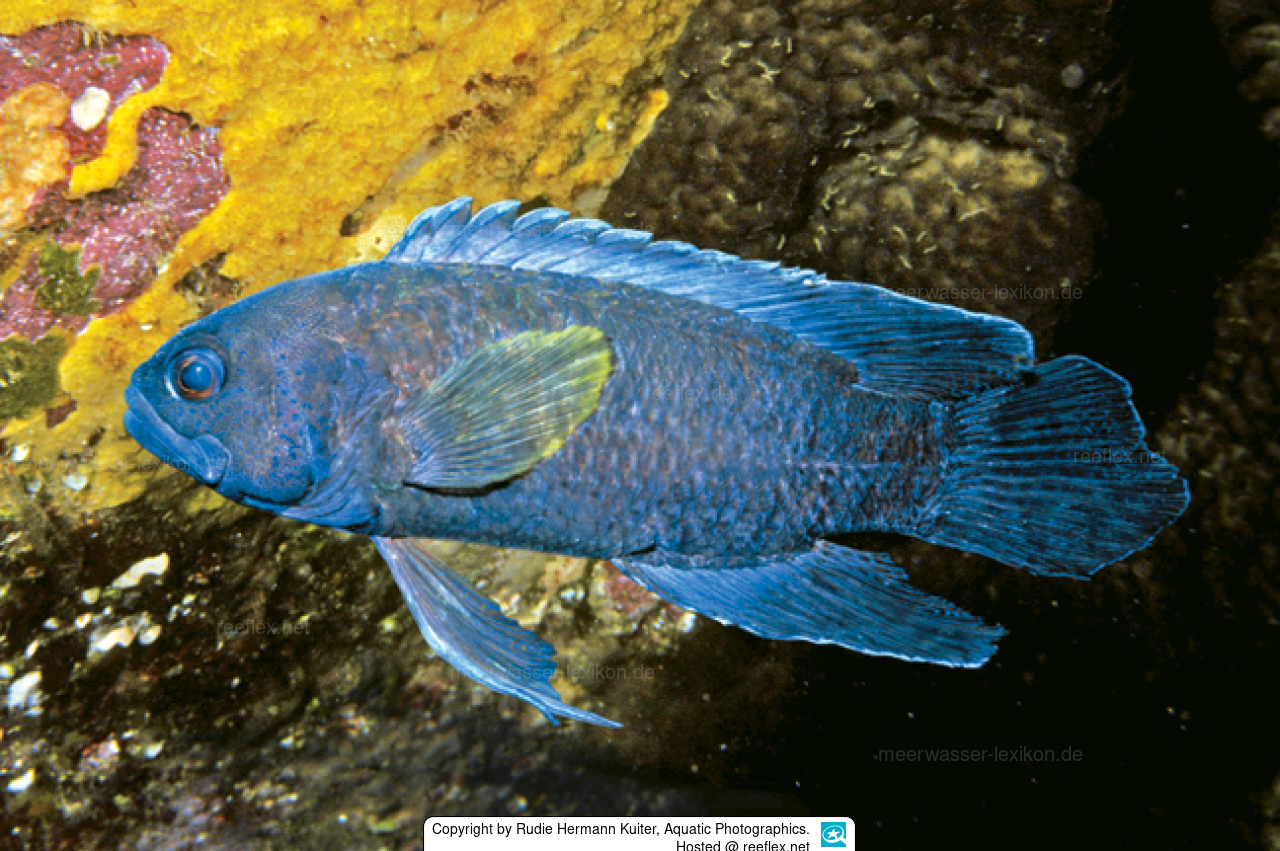Info
Paraplesiops sinclairi Hutchins, 1987
Miracle perch are very slow and quiet swimmers, usually hiding in caves or crevices in reefs during the day, often under rock ledges.At nightfall, it is believed, the rather shy perches go in search of suitable zooplankton.
The range of Paraplesiops sinclairi, which has spots on the head but not the body, overlaps with that of the similar bluegill, Paraplesiops meleagris, which has spots on the head and body.
As with other Paraplesiops species, breeding pairs most likely guard small numbers of eggs laid on rocky surfaces under ledges and in crevices.
Naming:
Paraplesiops sinclairi was named in memory of Nick Sinclair, who, as a member of the Department of Ichthyology of the Western Australian Museum, was involved in the collection of the holotype and two paratypes.
Miracle perch are very slow and quiet swimmers, usually hiding in caves or crevices in reefs during the day, often under rock ledges.At nightfall, it is believed, the rather shy perches go in search of suitable zooplankton.
The range of Paraplesiops sinclairi, which has spots on the head but not the body, overlaps with that of the similar bluegill, Paraplesiops meleagris, which has spots on the head and body.
As with other Paraplesiops species, breeding pairs most likely guard small numbers of eggs laid on rocky surfaces under ledges and in crevices.
Naming:
Paraplesiops sinclairi was named in memory of Nick Sinclair, who, as a member of the Department of Ichthyology of the Western Australian Museum, was involved in the collection of the holotype and two paratypes.







 Rudie Hermann Kuiter, Aquatic Photographics, Australien
Rudie Hermann Kuiter, Aquatic Photographics, Australien





